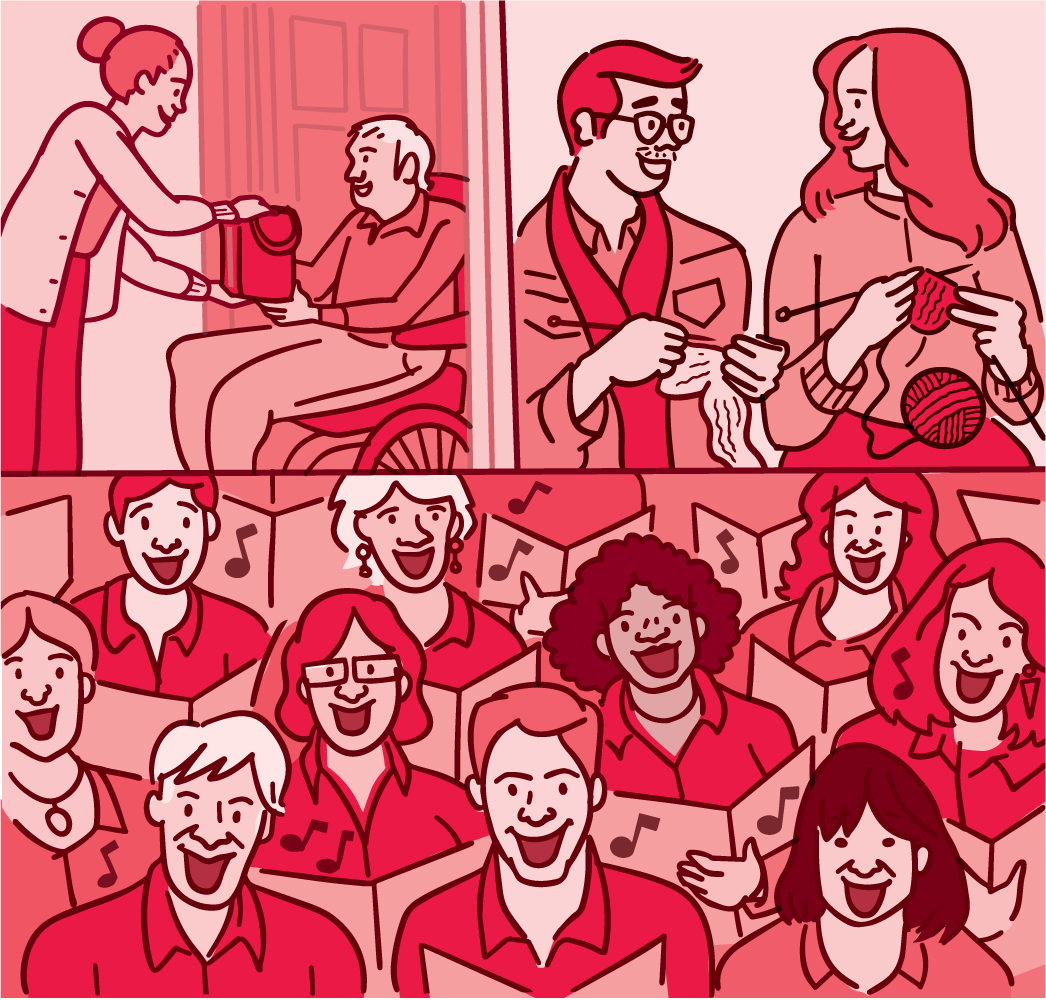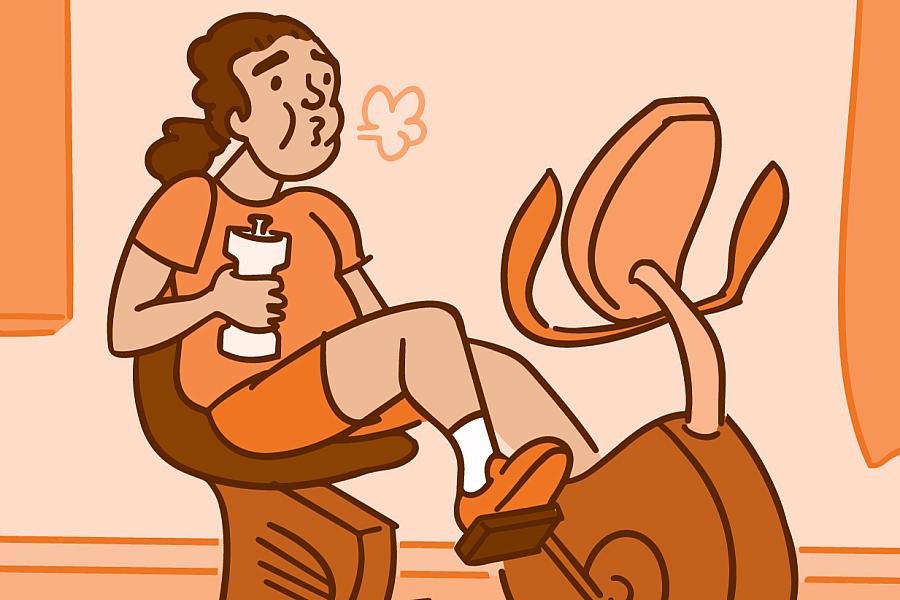Build Social Bonds to Protect Health
The Power of Personal Connections

From an early age, we learn that nutritious foods and physical activity can help us stay healthy. Growing evidence now suggests that social connections may also be key to good health. Socially connected people tend to live longer. They’re at lower risk for serious health problems. Social bonds are also linked to our mental health, eating habits, and much more.
Despite the links between our social ties and health, there’s been a troubling increase in social disconnection around the world. About 1 in 3 adults nationwide report feeling lonely. About 1 in 4 say they lack social and emotional support.
Social Bonds
Many factors can contribute to a person feeling lonely. These include the quality of your personal relationships, your community, and society in general. Your personal health, life stage, and personality can also have an impact.
People who are socially isolated or feel lonely are more likely to have heart disease, obesity, high blood pressure, depression, or anxiety. They’re also at increased risk for Alzheimer’s disease or other types of dementia, and for early death.
Recently, the COVID-19 pandemic affected our relationships and feelings of isolation. But the breakdown of social bonds was growing long before the pandemic. Over the past few decades, fewer people have been joining community groups or faith-based organizations. There’s also been a rise in single-person households. Digital technologies have made it easier to connect with others. But they can also expose us to harms like bullying.
Scientists are working to better understand the links between social bonds and our health. And they’re looking for ways to counteract the effects of loneliness and social isolation.
“Humans are a social species. We are highly dependent on others from birth,” says Dr. Elizabeth Necka, an NIH expert on social and behavioral science. “So feeling socially isolated can make you feel as though you’re in a very stressful situation. And stress has been associated with chronic Heat, swelling, and redness caused by the body’s protective response to injury or infection. inflammation, which can have effects on cardiovascular health.” Long-lasting inflammation has also been linked to cancer and other health problems. And our ability to biologically respond to stressors weakens with age.
Necka notes that there’s a difference between social isolation and loneliness, but the two are related. Social isolation means you have few connections or contacts with others. Loneliness has to do with how you feel about being alone, or your perception.
“Some people can be objectively socially isolated but not feel lonely. They may enjoy the solitude,” Necka explains. “Others can be surrounded by people and yet feel very lonely because those relationships aren’t satisfying to them.” Both loneliness and social isolation can be harmful to health. Even people who feel OK about being socially isolated are at increased risk for poorer health.
Who’s at Risk?
Everyone feels lonely now and then. But certain factors can raise the likelihood of persistent loneliness or social isolation. These include living alone, having trouble walking or moving, or having problems with vision or hearing. Other risk factors include financial struggles and mental health issues. Living in a rural, unsafe, or hard to reach neighborhood also raises your risk. So do major life changes like retirement or the death of a loved one.
Many studies have found that older adults are especially likely to feel lonely or socially isolated. But a recent analysis of more than 128,000 people from over 20 countries reports that young adults are also vulnerable. “Over the course of the adult lifespan, we found that loneliness is higher in young adulthood and older adulthood. It dips during mid-life,” says psychologist Dr. Eileen Graham at Northwestern University.
Graham and others have found that “generativity”—the urge to nurture younger people—can play a protective role. “People who are high in generativity are more socially resilient,” Graham says. “They feel they’re contributing to society, and they’re teaching new generations. It promotes well-being.” And it may help buffer against the harms of social isolation and loneliness.
“There’s an interesting thing that happens in late life,” Necka adds. “People tend to focus more on relationships that are high quality and on the positive and meaningful impacts of those relationships. There’s less focus on relationships that are a bit more casual. Research suggests that tendency in late life actually can be protective for older adults.”
Coupling Up
“Marital status, or intimate relationships, are also an important feature of our social networks,” says Dr. David Sbarra, a psychologist and researcher at the University of Arizona. Married people tend to live longer and have other health benefits compared to the unmarried. But the quality of the relationship, whether supportive or fraught, can have an impact. “In a high-quality relationship, your needs are taken under consideration, and you perceive that your partner cares for you,” Sbarra says. “This perceived responsiveness, or empathy, is key to intimacy.”
Sbarra’s team has found that divorce and separation are linked with changes to structures deep within cells called telomeres, which are associated with aging. Such changes are linked to health problems, including cancer and shorter life.
The team is now using brain imaging and smartphone apps to assess the quality of couples’ relationships. They’re studying whether repetitive negative thoughts in one partner leads to stress and health problems for both.
New Connections
“If you’re feeling lonely or socially disconnected, it can feel intimidating to try to form new connections,” Necka says. “High-quality connections are best. But even brief interactions can make a difference. It can be a first step.”
For example, you might go to the grocery store at the same time every week and see the same clerk. You can smile and strike up a brief conversation. Or you notice that someone at your regular bus stop always wears purple. You could chat about favorite colors. Over time, you might feel more comfortable connecting with others in different ways.
“If you see someone in your community, maybe an older adult who lives alone or a single parent, check in and ask what they might need. Let them know that you’re available,” Graham adds. “Offer to bring them dinner, play cards, or other things. We can reach out and help each other connect.” See the Wise Choices box for more tips, and in the process improve your health.
NIH Office of Communications and Public Liaison
Health and Science Publications Branch
Building 31, Room 5B52
Bethesda, MD 20892-2094
Contact Us:
nihnewsinhealth@od.nih.gov
Phone: 301-451-8224
Share Our Materials: Reprint our articles and illustrations in your own publication. Our material is not copyrighted. Please acknowledge NIH News in Health as the source and send us a copy.
For more consumer health news and information, visit health.nih.gov.
For wellness toolkits, visit www.nih.gov/wellnesstoolkits.




